…Precipitation and Bay Ronald
Precipitation
Analysis – Christopher Hector and Gemma Alexander…
Precipitation was born in 1933 and died in 1957, Bay Ronald was born in 1893 and died in 1907, and yet these two stallions are still influential today in the world of sport horses and it seems their influence is getting stronger as the two lines become more and more entwined…
Almost anyone who has even the faintest knowledge of jumping bloodlines knows the names Precipitation and Bay Ronald, but what is perhaps a little more surprising is the way these two have shaped modern dressage breeding in tandem – what started out as a survey of two stallion lines became much more interesting in the process of researching the story.
Precipitation has had an enormous influence on dressage breeding mainly through his son, the French Thoroughbred, Furioso. Furioso’s son Furioso II is the most influential stallion in modern sporthorse breeding full stop, but let’s not forget Furioso II’s full-brother, Mexico, who stayed in France where he sired, Le Mexico who went to Holland where his greatest influence has been in the dressage arena – Ferro, Negro, Rhodium, Rousseau, Blue Hors Zack and Ampère.
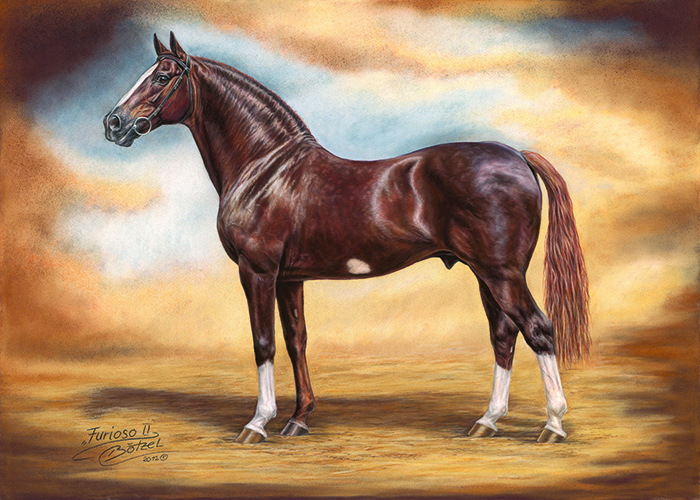
Furioso II
Why is Furioso II the most influential stallion of them all? In jumping – think – For Pleasure, Voltaire – sire of Concorde and Kannan, in dressage, Purioso, Cocktail, Jazz, Florestan, Fidermark, Florencio, Fidertanz, Foundation…
One of the most popular dressage sires in Germany, Escolar, carries the blood of both Precipitation and Bay Ronald and this is a pattern we will observe again and again.
Escolar and Hubertus Schmidt
Escolar is by Estobar NRW, whose dam Florence is by Ferragamo, a grandson of Furioso II out of Florabelle, by Florestan, another grandson.
The Fidermark son, Fürst Piccolo
There is more Furioso II on Escolar’s dam, Firah Dinah L by Fürst Piccolo by Fidermark by Florestan.
To underscore the dialectic of the two Thoroughbred foundation sires, Firah Dinah L’s dam, Samira is by Sion, who carries three crosses of our other hero, Bay Ronald, one cross of Furioso xx himself, and there is even a grand-daughter of Precipitation, that does not come through Furioso xx.
The English Thoroughbred, Precipitation was the winner of seven races out of 10 starts. According to ‘Thoroughbred Breeding of the World’ edited by Rainer L. Ahnert:
“He then won many long-distance races against the best in the land, crowning his distinguished career with a triumph in the Gold Cup at Ascot.”
story continues below the advertisement
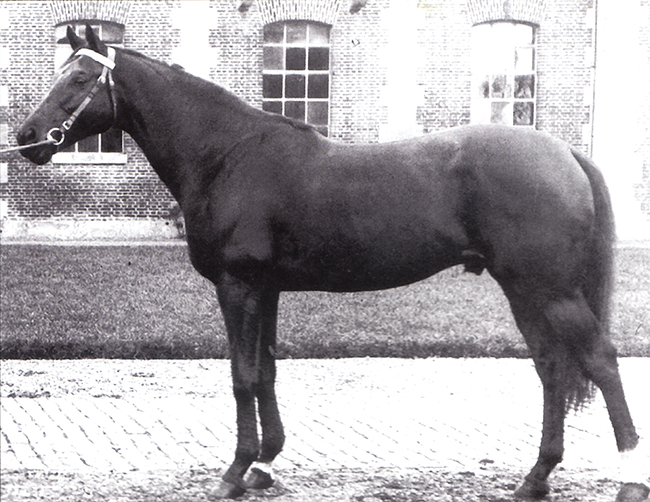
Furioso
No doubt the most important son of Precipitation in the breeding of performance horses, has been Furioso. Unlike his sire, Furioso was a failure on the track – zero wins in 21 starts – but became a fabulous sire of jumping horses in France, with his son, Lutteur B, winning the showjumping individual gold medal at the 1964 Olympics. As we will see the influence of Furioso is still strong in Germany and Holland and – if anything – getting stronger.
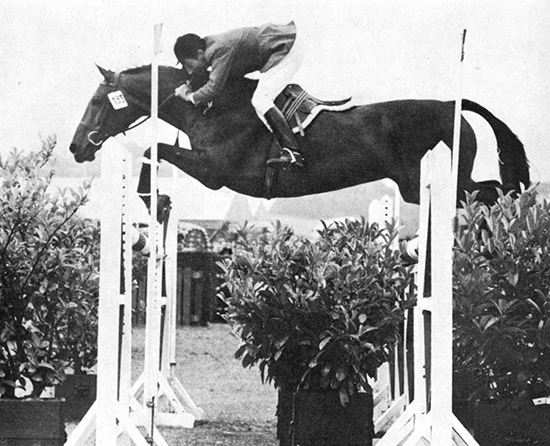
Lutteur B
It was in Germany that the Furioso son, Furioso II would establish a dynasty that continues to dominate in showjumping and dressage to this day…
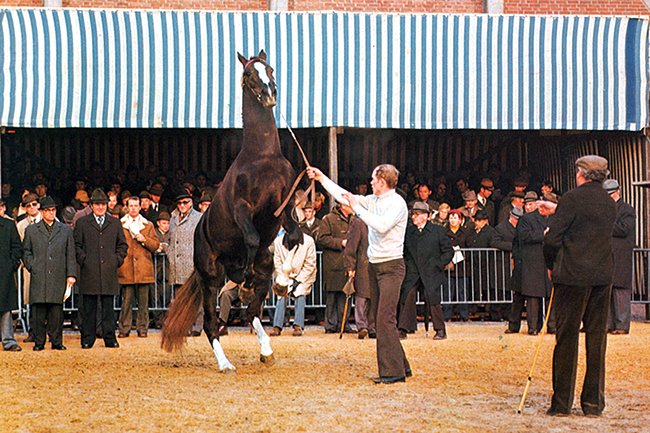
Furioso II at his licensing in Oldenburg
Furioso II was out of the great Selle Francais mare, Dame de Renville, who produced a series of wonderful horses when mated with Furioso. The first of these was Mexico, who standing at the French National Stud of Le Pin, sired 20 approved sons, 20 dams of stallions, and famous international showjumping horses, including Laeken, Jexico de Parc and Heur de Bratand. We have already noted the influence of his son, Le Mexico in The Netherlands.
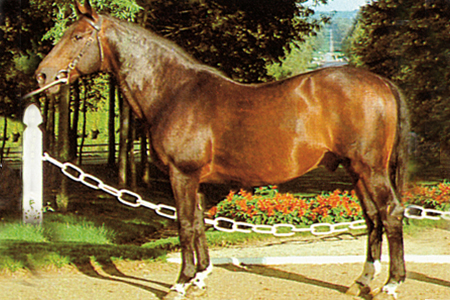
Mexico
Furioso II was imported to Oldenburg by master breeder Georg Vorwerk. He was attractive to the Oldenburg breeders as they wanted a half-blood stallion to help make the transformation of their mares to more modern lines, without too much direct Thoroughbred blood. Furioso II stood at Georg Vorwerk’s stud in Cappeln from 1968 to 1985. He was leased to Zangersheide in 1986, and died in Belgium, that year.
It would seem he was exceptionally potent. Dr Roland Ramsauer had just started work at the Oldenburg Verband when Furioso II was in his prime – Dr Ramsauer tells a good story:
“When I started he was five or six years old and he was very successful. At that time, he was covering 450 mares per season, natural covering! I was a university student at the time, and the professor told me, with natural serving, a stallion can cover a maximum of 200 mares. I said, Mr Professor, I am sorry but I know a stallion that covers over 450 mares. He said, I don’t believe that. Then I will invite you to come to the station of Mr Vorwerk and there you can see that Furioso covers for the first time in the morning, at five o’clock, at eight o’clock, for the second time, twelve o’clock, the third time. Three o’clock in the afternoon for the fourth time and seven o’clock in the evening for the fifth time, in the main season, May, June, July. The professor saw it for himself, unbelievable, then Mr Vorwerk said, let’s go to the dining room and have a Schnapps. The whole day, and up till the next morning, they were drinking and talking about Furioso and how he was found in France.”
Brave Professor – Mr Vorwerk’s schnapps drinking was as legendary as his skill as a horse breeder…
“There is another story. When I had been the breeding director for six months, I met Dr Lehmann, the Director from Westfalia, and a very intelligent, well-educated man. He said to me, Herr Ramsauer, you are a nice man, and I will tell you one thing, how can you breed with this stallion who belongs in the zoological gardens, Furioso II? I said, Dr Lehmann, that is not your job, that is my job and we believe that we can be successful with the breed of Furioso II, that will be the success of the Oldenburger. And then, I think eighteen years later, there was Florestan, the big stallion in Westfalia, and I said, Oh Dr Lehmann you are breeding with this zoological stallion from France and you get Florestan, what do you think about that? He said, Florestan, that’s another story – I said it’s not another story, it’s a grand-son of Furioso II. Then he stopped talking about zoological things.”
What was it about Furioso II that made him great? There were a number of horses that came from France at that time, but only two of them, Cor de la Bryère and Furioso, worked, and there must have been another 15/20 that disappeared…
“You’re right, that was our problem too, to find another stallion after Furioso II. Vorwerk and I, we were traveling every year to France looking for stallions, and we tried three or four but they were not successful. It was only Furioso II, with his Thoroughbred sire line, that fitted our breed so successfully.”
What did he give?
“He gave everything. Performance, for showjumping horses, for dressage horses, three-day event horses. Mr Vorwerk, he was a genius, if he had not been there, I think Oldenburg might have gone to merge with Hanover, but he said, Oldenburg is Oldenburg and Furioso is Furioso, and he and Inschallah, the Anglo Arab, they are Oldenburg. The smart thing he did was that he had breeders around him, and they all had excellent mares – and he said, you never sell a filly, you keep it, and I will organize the next generation for you. And the breeders believed him and that is why he was so successful. And they believed in him when he said, you have to change, go to Inschallah, go to Westminster, you go to Furioso. They believed the words of this outstanding breeder, Mr Vorwerk.”
story continues below the advertisement
Initially Furioso II was mainly influential as the sire of jumping horses. For many years, Furioso II was ranked in the top three sires of leading money winners in Germany. His showjumping stars included: FBI (with Thomas Frühmann), Heissman (ridden by Eric Van Der Vleuten, then Michael Matz) and For Pleasure, but Furioso II had winners in all disciplines.
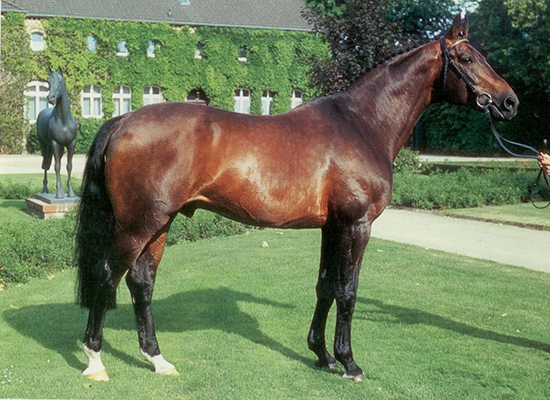
Florestan
Although For Pleasure has been a hugely successful jumping sire in Germany (alas more as a sire of competitors than a sire of sires), as has another son in Holland, Voltaire,who has proven an excellent sires of sires, of recent years the attention has shifted to the dressage arena, thanks largely to Furioso II’s Westfalien grandson, Florestan, sire of a string of excellent sons, most notably Fidermark, and grandsons – Farewell, Fidertanz, Falsterbo, and indeed the most popular German stallion of recent times, the great grandson, Foundation.
Fidermark and Marlies van Baalen
Farewell competing at the Bundeschampionate
Fidertanz, sire of Foundation
Charlotte Dujardin’s current star, Mount St John Freestyle is case in point. Her sire, Fidermark combines the two, Precipitation through Florestan and Bay Ronald through the dam sire, Werther who has two crosses of Bay Ronald through his dam sire, Marcio.
Freestyle is out of a Donnerhall mare, and Donnerhall has three crosses of Bay Ronald, while also on the dam line we find more Bay Ronald, through Werther and Atatürk, who has two crosses of Bay Ronald.
Matthais Rath and Foundation
We find the same mix in Foundation. The young stallion is a great great great grandson of Furioso II, while Foundation’s sire, Fidertanz, on his dam side goes to Bay Ronald through Ravallo, a grandson of Ramiro, who is out of a Cottage Son xx mare and Cottage Son is a great great grandson of Bay Ronald. Foundation’s dam is a great grand-daughter of Donnerhall, and Donnerwetter the sire of Donnerhall, has two crosses of Bay Ronald thanks to his dam Melli’s great grandsire, Marcio xx.
When Gemma Alexander checked Foundation’s pedigree back 16 generations she found that Bay Ronald appeared 40 times, and Precipitation twice…

story continues below the advertisement
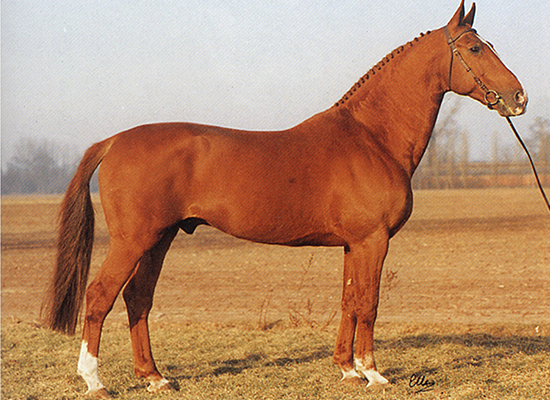
Le Mexico
In Holland it has been Le Mexico who spread the Precipitation blood to the dressage arena, mainly through his son Ulft, sire of Ferro, who in turn is the sire of Negro, sire of Valegro, and Rousseau, sire of Blue Hors Zack.
Blue Hors Zack’s sire Rousseau is a great grandson of Le Mexico, while his dam, Zsuzsa traces on her damline to Anblick xx, who was out of a Dark Ronald mare. Zack’s dam is by Jazz, that most influential of Furioso II great grandsons, while Purioso, the Furioso II son, who brought the line to Holland is out of a mare by Martell – a gread grandson of Dark Ronald. Jazz’s sire, Cocktail was out of a mare by Le Val Blanc xx by Val de Loir xx, out of Vali, a grand-daughter of Jock II xx, who is a grandson of Teddy out of a grand-daughter of Bayardo, two of the more important transmitters of Bay Ronald blood. Once again Precipitaton and Bay Ronald combine to create the most influential of all the Dutch dressage stallions, Jazz – sire of Johnson, Olivi and Tango along with scores of successful dressage competitors.
Vivaldi, by Krack C
Current flavour of the month, Vivaldi, is by Krack C, whose sire, Flemmingh is a grandson of Lacapo, who is out of Larsa, by Capitano, a grandson of Cottage Son xx, so once again, Bay Ronald combines with Precipitation, since Vivaldi’s damline is concentrated Furioso, his dam is by Jazz out of an Ulft mare…
The other side of the equation – Bay Ronald…
It is almost impossible to imagine the modern Holsteiner without the influence of Bay Ronald, think Son in Law, Ladykiller, Cottage Son. But he too has been influential in dressage, in Germany, think Woermann, Werther, Weltmeyer, Donnerhall, Lauries Crusador xx, even Breitling who is has Bay Ronald on top and bottom – by Bolero but out of a grand-daughter of Der Löwe…
By the hurdler, Hampton, Bay Ronald raced for four years, and more than paid his way. A winner of the Lowther Stakes, the Limekiln Stakes, the City and Suburban Handicap, and at the age of five, the Epsom Cup. Described as a useful handicap horse, he was a sensation at stud, founding a line that still flourishes. His most influential sons were Bayardo, Dark Ronald (sire of Son In Law) and MacDonald II.
But before his worth could be proven, Bay Ronald was sold to France for £5,000 where his career as a sire really bloomed. In France he sired the mare Rondeau, dam of Teddy – one of the most important influences in Germany, France, Great Britain, Italy and the USA.
In Germany, we regularly find both Teddy and Dark Ronald, often on dressage pedigrees. Take the pedigree of Donnerwetter, the sire of Donnerhall. His dam, Melli is by Matador (Marconi-Marcio xx-Aventin xx-Teddy xx, and Aventin’s dam’s sire is Dark Ronald!) and out of Lilli by Der Löwe whose dam, Lehnsherrin xx is by Herold xx by Dark Ronald.
World Cup I (and his brothers II-IV) is by Woermann whose dam, Mandat is by Marabou xx-Oleander xx-Prunus xx-Dark Ronald. World Cup’s dam is Sendernixe out of Lünenixe by Lugano I by Der Löwe.
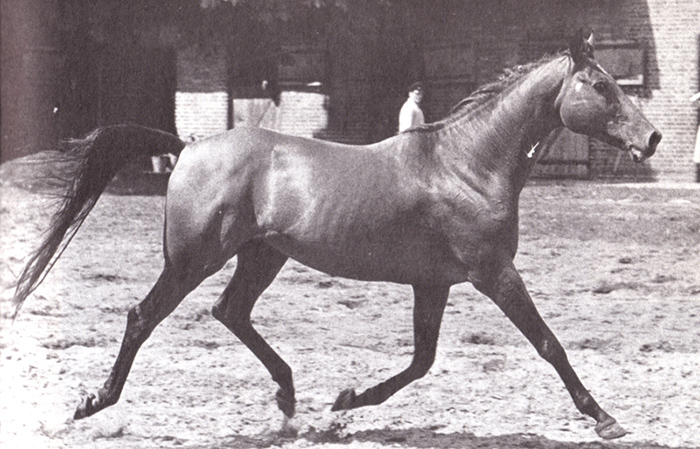 Marcio xx – two crosses of Bay Ronald…
Marcio xx – two crosses of Bay Ronald…
Or another of the great modern sires of the Hanoverian breed, Werther who is out of Meisterkrone by Marcio xx – once again two crosses of Bay Ronald in the breeding of Marcio’s sire Aventin.
One of the most influential stallions in the transformation of the Holsteiner from work horse in the fields to sports star, has been Ladykiller xx. Ladykiller is by Sailing Light whose dam, Solar Cygnet is by Hyperion, by Gainsborough by Bayardo – while Ladykiller’s dam, Lone Beech is by Fartuch by Apron by Son in Law by Dark Ronald.
Another of the Thoroughbreds that transformed the Holstein breed was Cottage Son by Young Lover, by Son In Law by Dark Ronald.
In more recent times there was the great jumping sire, Capitol I by Capitano (Corporal – Cottage Son xx) and out of Folia, who is by the Manometer xx son, Maximus. Maximus has three crosses of Bay Ronald.
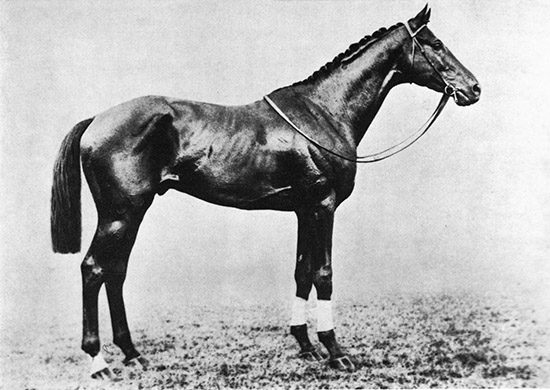
Son in Law
It was through one of his British born sons, Son In Law that Dark Ronald was to dominate the bloodlines of the sport horse world. Son In Law was described as a plodding middle distance horse, but he became known as a sire of slow maturing horses of great stamina.
Three of the most important sires in modern Holstein breeding trace to Son In Law: a grandson, Cottage Son, Ladykiller (though his second dam) and Cor de la Bryère whose sire, Rantzau is a great grandson of Son In Law, but his dam, Quenotte carries the blood of Precipitation through her sire Lurioso and his sire Furioso.
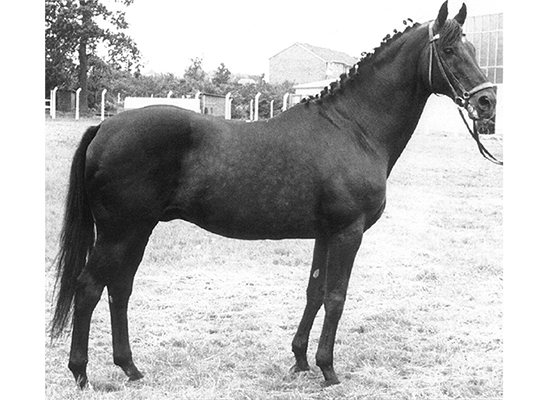
Cottage Son
Son In Law’s influence in the showjumping ring spread to New Zealand, Australia and the United States, through his son Beau Pere. As a racehorse Beau Pere was a real plodder, starting his career as a three year old, winning once, and at four winning two of four starts for lifetime earnings of just over £1,000. In his first two foal crops he produced six foals, of which two were relatively minor winners.
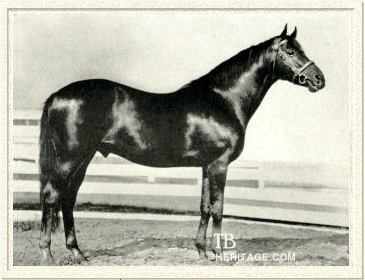
According to that excellent website, Thoroughbred Heritage, “Beau Pere was an imposing individual. He stood well over 17 hands and was broad as a bull, a physique with unusual consequences. When he arrived in Kentucky by train, he would not fit in the horse van and had to be walked the few miles out to Combs’ Spendthrift Farm outside of Lexington. Beau Pere was an unrefined individual with a thick neck, rather low withers (like his sire) and a long body. Photos also indicate that his pasterns were extremely upright.”
Beau Pere was sold to New Zealand for £500, where he was an instant success, topping the leading sire list twice after just three seasons. He was sold to Australia, where he was leading sire three seasons in a row. Beau Pere was purchased by Hollywood mogul, Louis B Mayer and exported to California, where his daughter, Iron Reward, was dam of the brilliant Swaps.
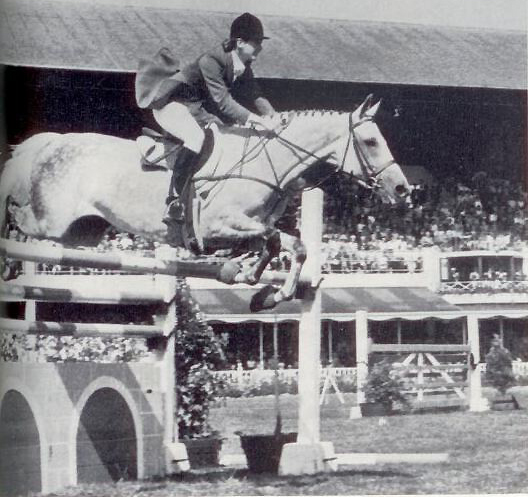
Mary Chapot and White Lightening at Aachen in 1968
Through his sons and daughters, Beau Pere influenced American showjumping. Mary Chapot’s White Lightning was by the Beau Pere grandson, Grey Tower. Katie Monahan’s jumper, Encore is out of Shirlee Steel, by the Beau Pere son, Polished Steel (Shirlee Steel is also the dam of Kerry Milikin’s eventer Landlady). Beau Pere’s son Doctrine sired Sundancer (twice a winner of the American Invitational) and his full brothers, Easy Doc (a member of the Canadian equestrian team) and British team member, Turn on the Sun. Doctrine’s daughter, Mity Doc, produced international showjumpers, Revlon Adam, and full-brother, Mity Wind, exported to Europe and licensed by Studbook Zangersheide.
Let’s look to the breeding of one of the current stars of the Zangersheide stud, Dominator 2000 Z, and once again we find the rich legacy of Bay Ronald. Dominator is by Diamant de Sémilly a grandson of the influential Grand Veneur, whose pedigree features four crosses of Bay Ronald. There is another cross, through Teddy on the pedigree of Diamant’s dam, Venise des Cresles.
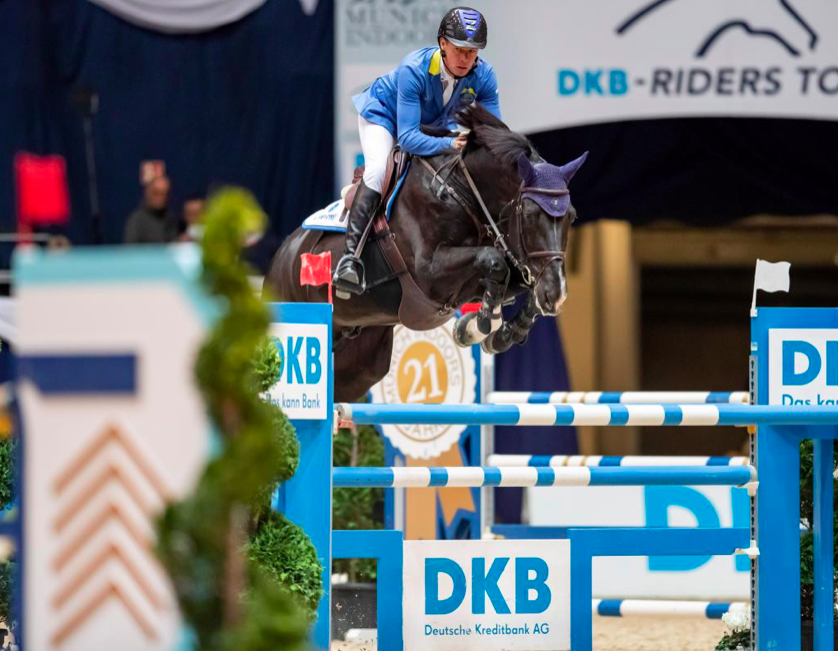
Dominator in action…
Dominator is out of the Holsteiner mare, Cephale who is by Cassini I, who is a great grandson of Corporal by Cottage Sun. Capitol is out of Folia by Maximus who carries a cross of Teddy and a cross of Dark Ronald.
Then we have Cor de la Bryère, out of Quinettte by Lurioso by Furioso xx. Corde is by Rantzau, and on his papers we find all those familiar names – Son in Law, Teddy, Bayardo and Bay Ronald .
Cephale is out of a mare by Franklin, not a household name, but very much the mix we are looking at. Franklin is a great grandson of Sparker, who has one cross of Teddy, three of Bayardo, and one of Precipitation. Franklin’s grandsire Abendfrieden carries another cross of Bay Ronald, through the Dark Ronald son, Herold. Franklin’s sire Feenspross, is out of a mare by Dschingis Khan by the influential Neckar by Ticino, by Dark Ronald. Franklin is out of Celia V by Caretino, more Bay Ronald, and Precipitation through Caletto II by Cor de la Bryère, out of Deka by Consul by Cottage Son. Franklin’s grand dam is by Lavello by Lord (Ladykiller / Cottage Son), then there is another cross of Corde on the bottom line of the pedigree. Dominator’s great grand dam, Imandra III rounds out the picture with more Cor de la Bryère and Cottage Son, through the stallion, Convent.
Gemma Alexander examined Dominator’s pedigree back 16 generations and found that Bay Ronald appeared 61 times, and Precipitation 5 times…
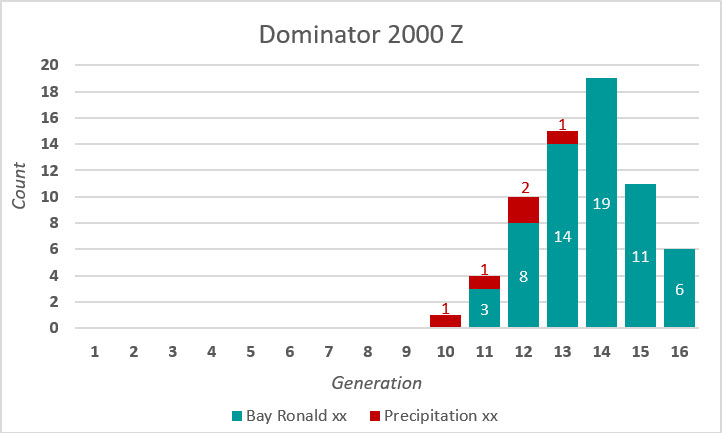
In Hannover the influence of Dark Ronald has been strong. The influential Thoroughbred sire, Der Löwe, is out of a daughter of Herold, by the Dark Ronald son, Dark Legend. Another daughter of Herold, produced Abendfrieden, sire of Pik As, sire of Pik König.
In 1905, Bay Ronald bred to Galicia, produced Bayardo, who was the sire of consecutive winners of the English Triple Crown, Gay Crusader (1917) and Gainsborough (1918) who was the sire of Hyperion. So small was Hyperion that he was almost gelded, fully grown he was just 15.1½ but it didn’t stop him on the racetrack where he won the Derby in record time and the St Leger. He was equally successful at stud, where he was ranked amongst the top 10 sires for sixteen years.
Hyperion’s influence on the jumping world has been huge in the United States, where his son Heliopolis was twice leading sire of racehorses. The great showjumper, Jet Run was out of a mare by Heliopolis’ son, Heliodorus. Heliopolis’ son, Grey Eagle, was the sire of A Little Bit, a silver medalist at the Pan American Games.
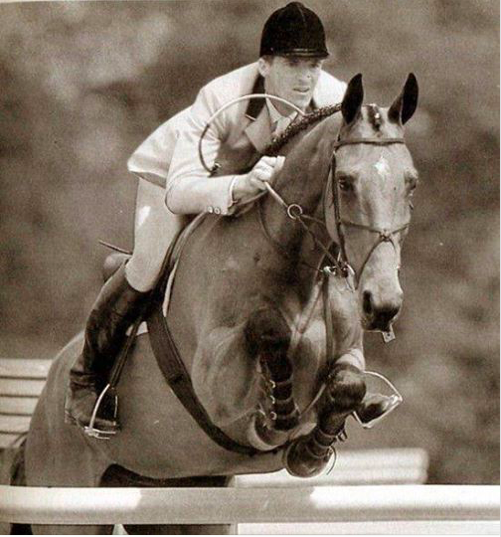
Micheal Matz and Jet Run (from the facebook page of the Golden Age of Showjumping)
Another Hyperion son, Khaled has through his sons, sired the jumpers, Black Market and Encore (winner of the Grand Prix at Fontainebleau and a USET team member). Khaled’s most important son was the Derby winner Swaps, whose pedigree boasts two branches of the Bay Ronald line, through Khalad and also through his dam, Iron Reward, a daughter of Beau Pere. Swaps’ son, Kudu sired the Canadian equestrian team horse, Stoic. Tudor Success, dam of Anne Kursinski’s Australian-bred Olympic horse, Eros, was by the Swaps son Marbrino.
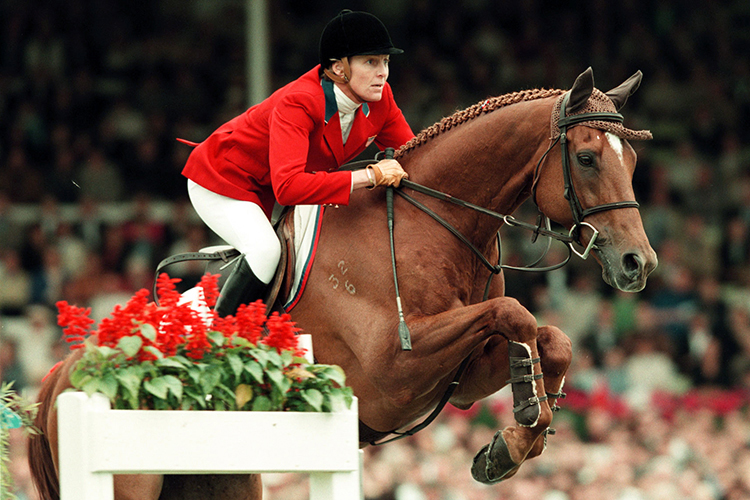
Anne Kursinski and Eros
Another Hyperion son, Owen Tudor xx has been influential since in performance horse circles right around the world. The Owen Tudor daughter, Idealist foaled Compromise, the sire of the Dutch jumping stallion, Lucky Boy xx. The Owen Tudor son, Abernant xx sired the USET jumper, Aberali, winner of the puissance at Aachen. Abernant also sired Abgar xx, another major jumping sire in Dutch breeding. Abgar has another Bay Ronald cross on his dam’s side, she is by the Djebel son, Roc du Diable xx.
Aktion and Gylla Dallos competed for Hungary
Abgar also sired Pion, whose son Aktion was a dressage star for Gylla Dallos. Abgar was also important as a broodmare sire, particularly when they were bred to his stablemate, Joost. The cross of Ramiro over an Abgar mare produced the stallions, Zeoliet, Armstrong and Rolando.
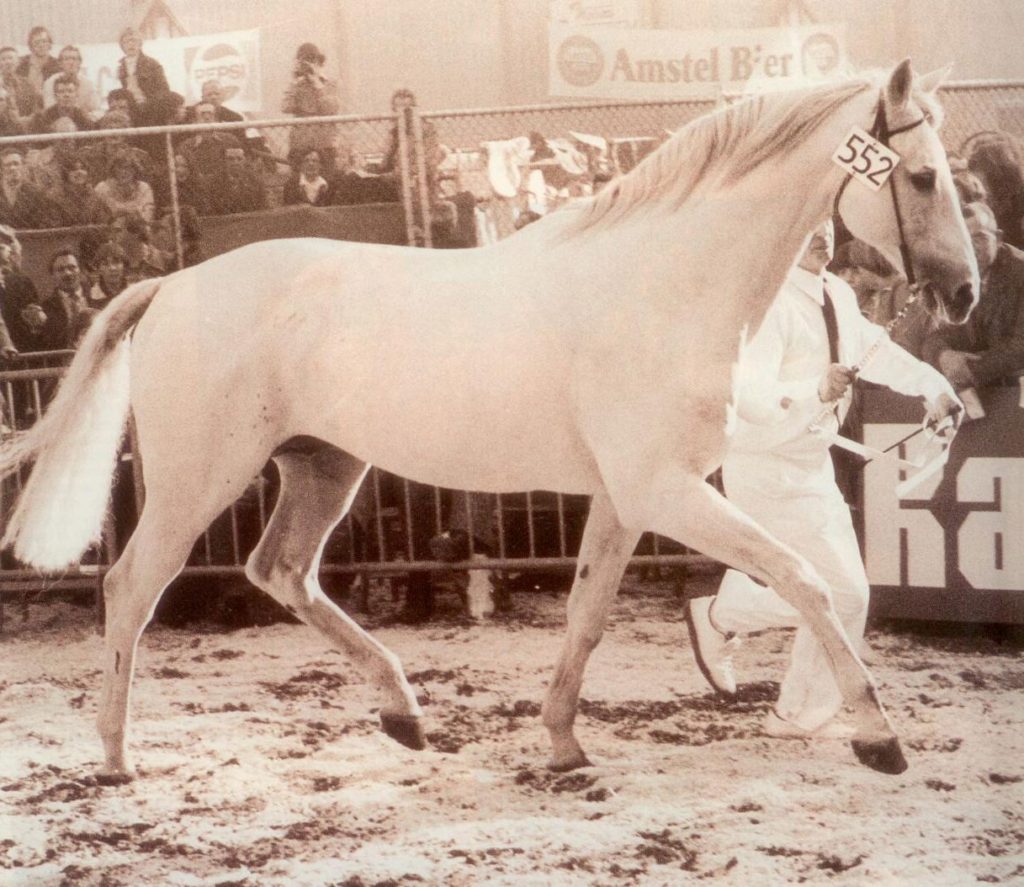
Abgar – to reinforce the message his sire Abernant’s dam is by a son of Son-in-Law
In Australia, the most successful eventing breeder has been Bud Hyem – her broodmare, Sandrift, is the dam of Olympic gold medal winners, Kibah Tic Toc, and Kibah Sandrift. Sandrift is by Big Hat by High Hat by Hyperion. Big Hat is out of Gay Natasha by Prince Chevalier by Prince Rose who is out of the Bayardo granddaughter, Indolence. Gay Natasha is out of First Blush by Bobsleigh who is by Gainsborough, by Bayardo by Bay Ronald.
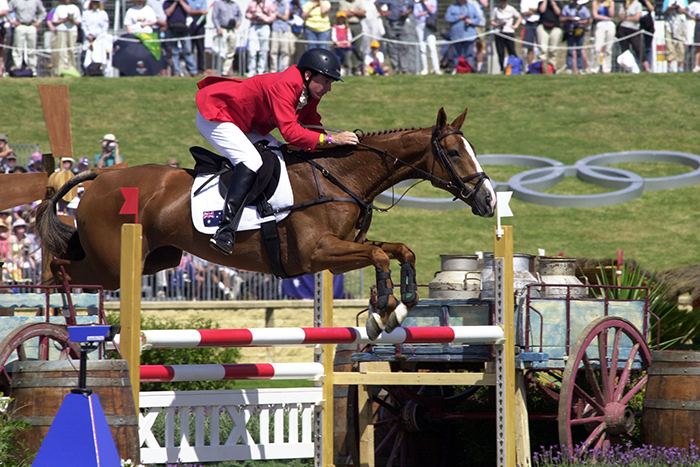
Kibah Sandrift and Mathew Ryan – gold at Sydney
Sandrift is out of Drift by Beau Gift by the Melbourne Cup winning stallion, Marabou, who is out of Vivandiere, by Bucks Hussar by Son In Law.
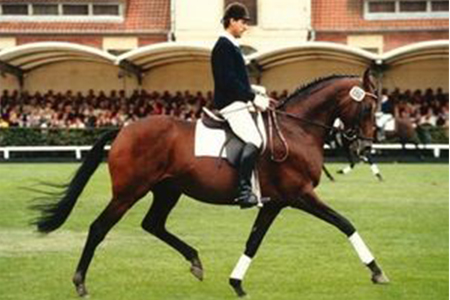
Lauries Crusador
Owen Tudor’s son, Tudor Minstrel xx is the sire of Lauries Crusador xx, an extremely important ‘refining’ sire in Hannover, and a producer of real dressage talent.
Another influential horse on many performance pedigrees is the French stallion, Djebel xx. Djebel was the champion two-year-old in France, leading money winner at three and five, and was three times leading French Thoroughbred stallion. Djebel’s dam Loika xx is by Gay Crusader by Bayardo out of Coeur a Coeur by Teddy.
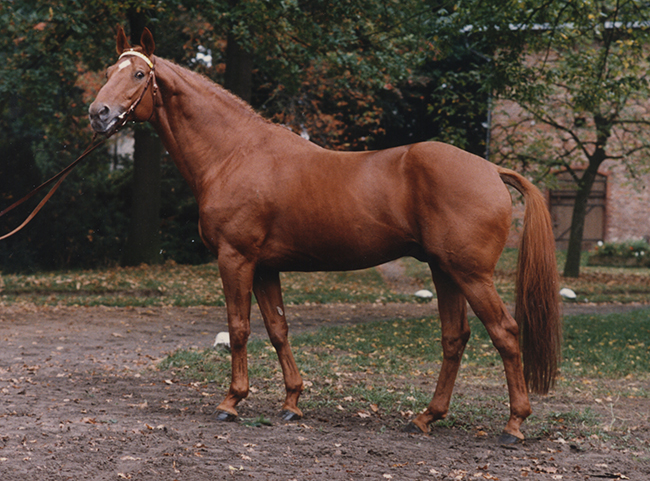
Bolero
Djebel is the great great grandsire of the influential Hanoverian dressage stallion, Bolero (by Black Sky xx-Blast xx-Djebe xx-Djebel xx). Bolero returns the Dark Ronald line on his dam’s side also – he is out of Baronesse by Bleep xx who is out of the Hyperion mare, The Satellite xx. Bolero’s influence was on the wane for a while but has come back with a vengance thanks to Breitling and Belissimo, two of the more important dressage sires of modern times – indeed Breitling has been the leading sire of Grand Prix horses despite only covering a handful of mares.
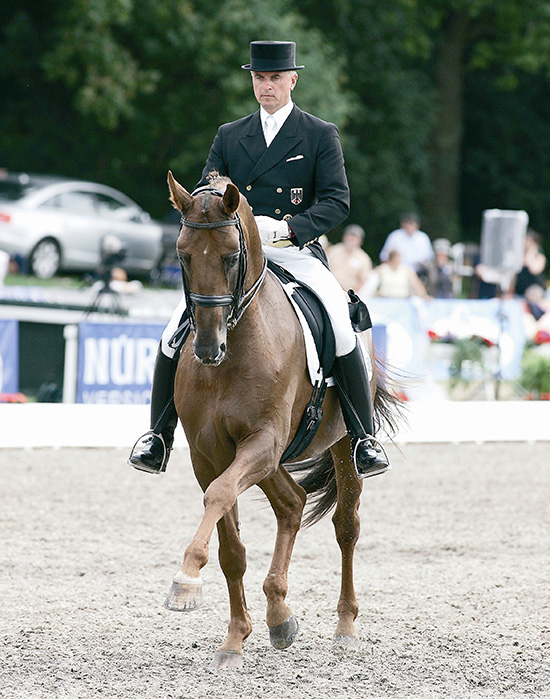
Breitling and Wolfram Wittig
Story continues below the advertisement
Or let’s look at Isabell Werth’s superstar, Bella Rose. She is by Belissimo by Beltain – Bolero on the top line and additional Bay Ronald on his dam side with a cross of Marcio.
Bella Rose and Isabel Werth
We can even locate lots of Bay Ronald blood in the pedigree of Bella’s dam sire, the French Anglo Arab, Cacique – six crosses of Bay Ronald.
So profound has been the influence of Bay Ronald that it is almost a relief when you find a jumping pedigree that does not feature his name. He is certainly one of the most influential jumping progenitors of all time!
It might also be worth pointing out that while at the height of the WFFS hysteria – which thankfully seems to have almost completely disappeared – the Westfalian Verband suggested Dark Ronald xx was potential ‘patient zero’ for the genetic disease. In a paper published in June 2020, researchers Xuying Zhang, Marc Hirschfeld, Renate Schafberg, Hermann Swalve, and Bertram Brenig have now scientifically proven through DNA sampling that Dark Ronald xx is not the culprit, so his sire is in the clear.
Nena Winand, one of the U.S.A’s leading researchers on WFFS commented on Eurodressage: “At least it is now proven that Dark Ronald and Son of Law were not the source of the mutation, which was proposed by German statisticians, who used a flawed analysis that didn’t account for transmission via dams. That is a big issue with these types of computer analysis.”
It’s a relief because if Bay Ronald was a WFFS carrier, and facebook was around in 1900, we might have lost half of the equation that has shaped the modern sporthorse…
Next Gemma Alexander looks at figures
Breeding a champion in Australia this season? Whatever the discipline, IHB has a stallion for you, go to www.ihb.com.au and make your selection…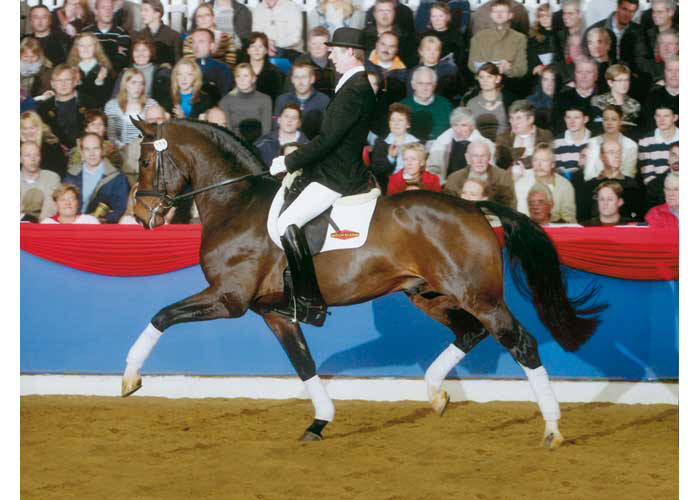
FidertanzBaloutaireFoundationGemma looked at the top 10 jumping and dressage sires – her results are pretty amazing:Here are my charts of the influence of Bay Ronald and Precipitation on the top 10 jumping and dressage sires.Interestingly, Bay Ronald appears in EVERY pedigree of the top 10 jumping AND dressage sires. Pretty influential I would say!Precipitation had much less influence, although he still appears in just under half of the horses looked at.
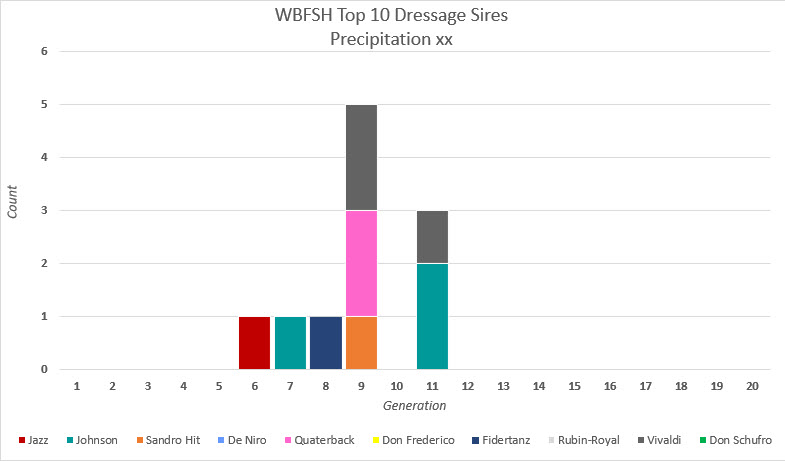
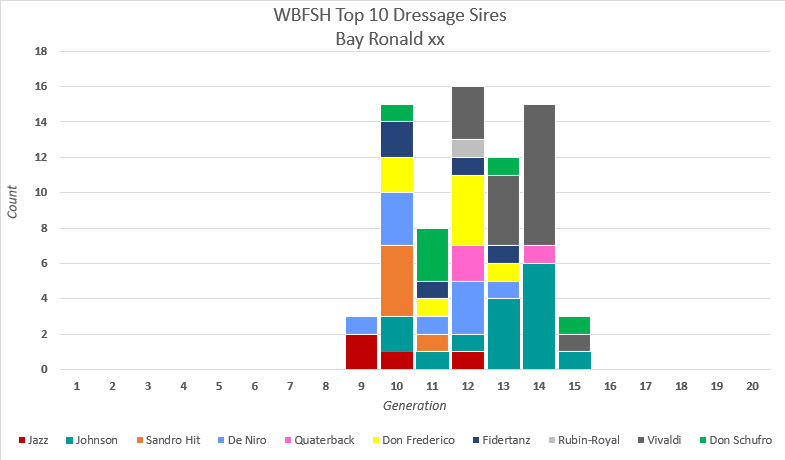
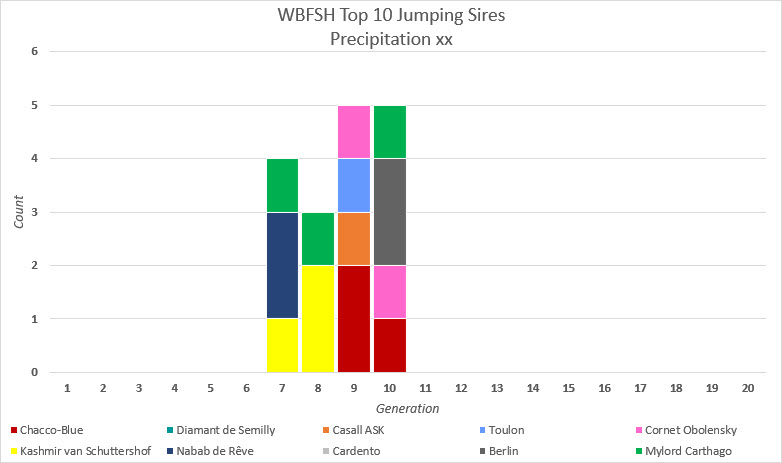
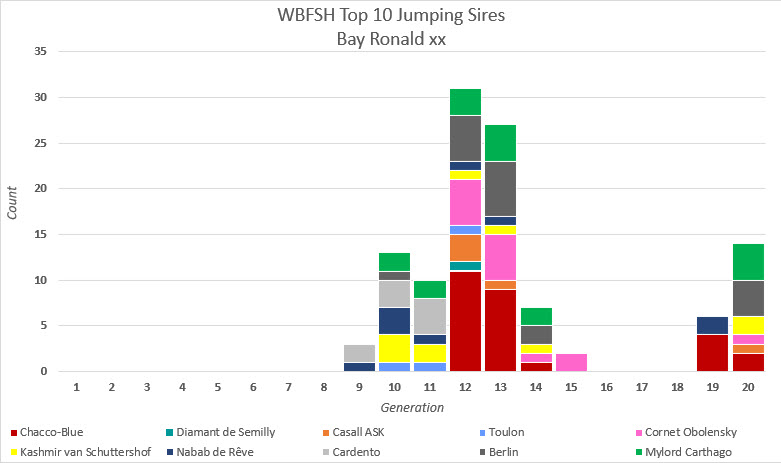

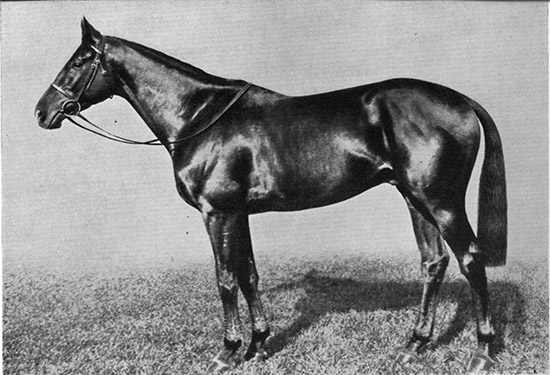
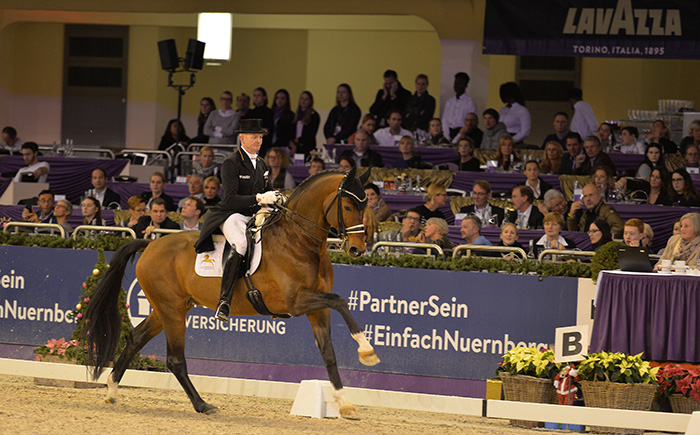
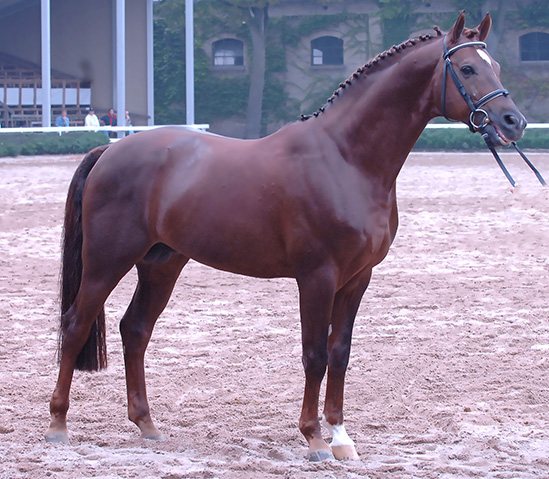
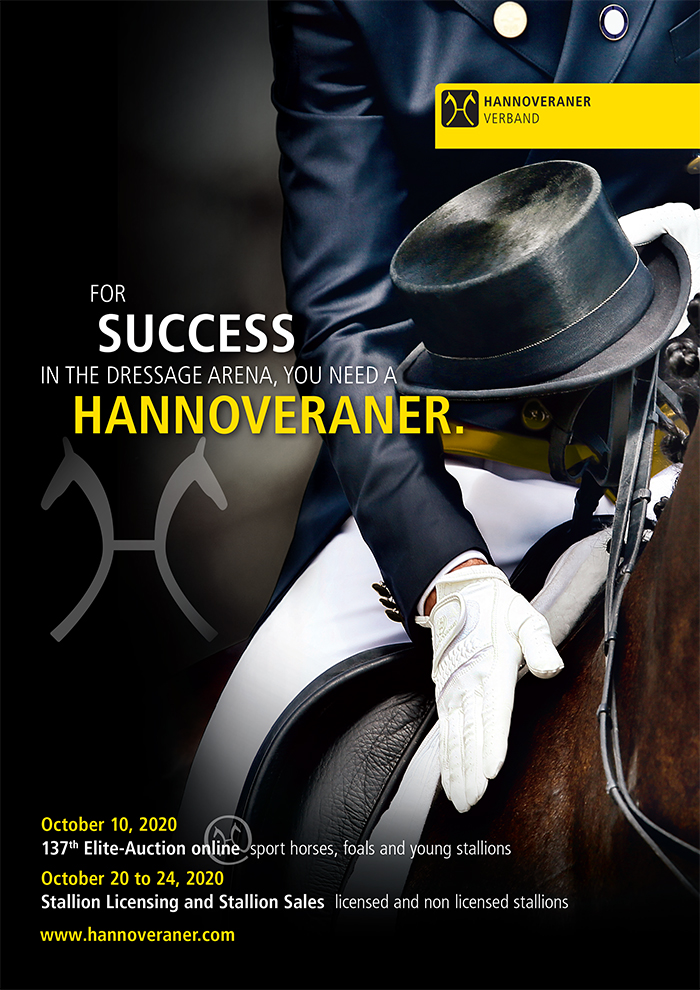
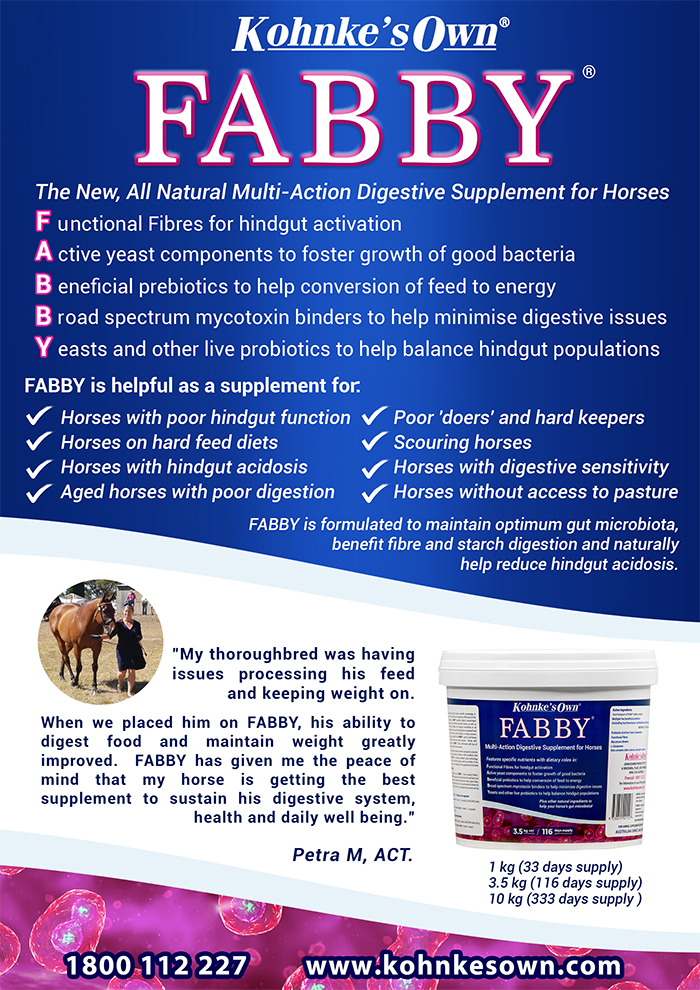
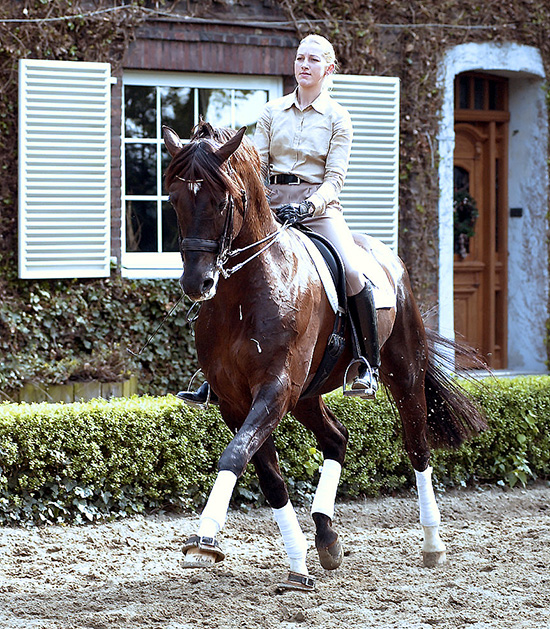
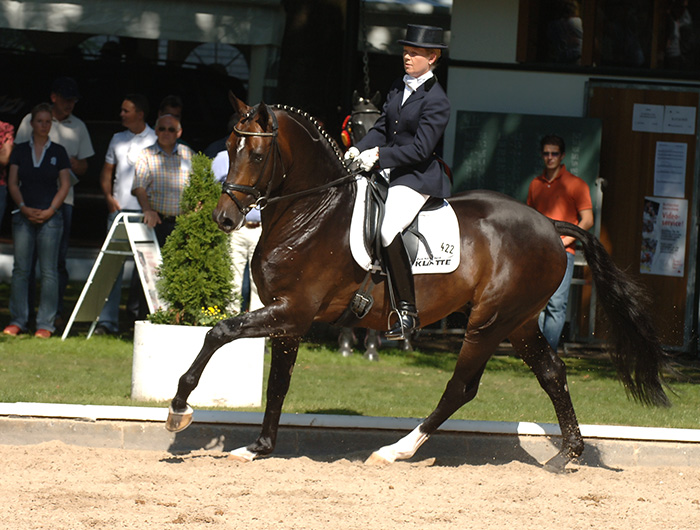
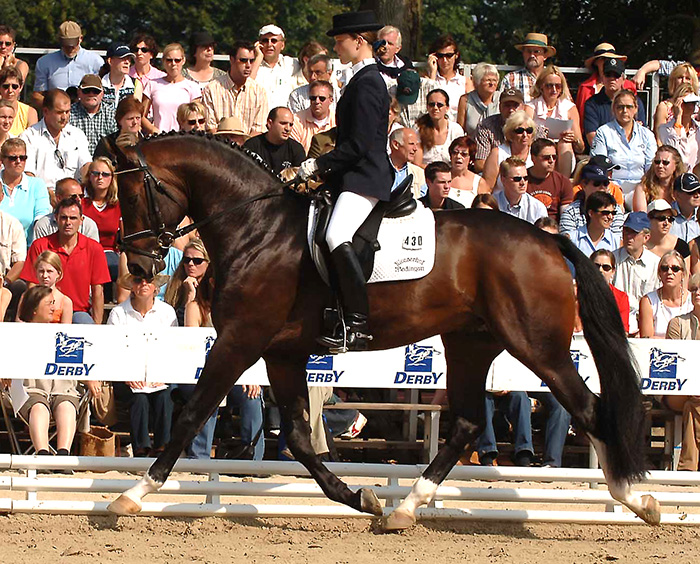
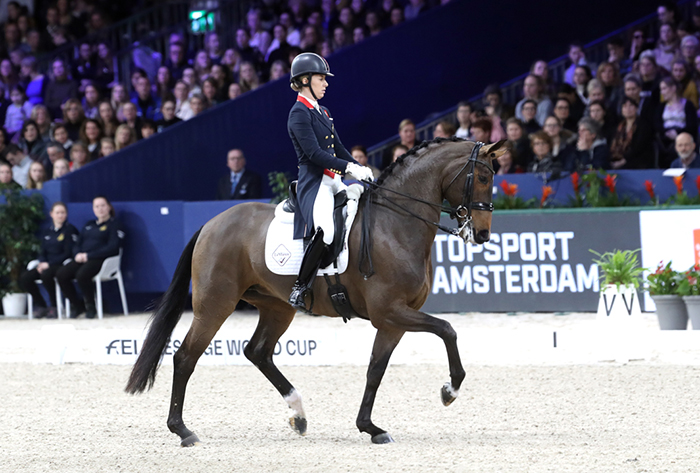
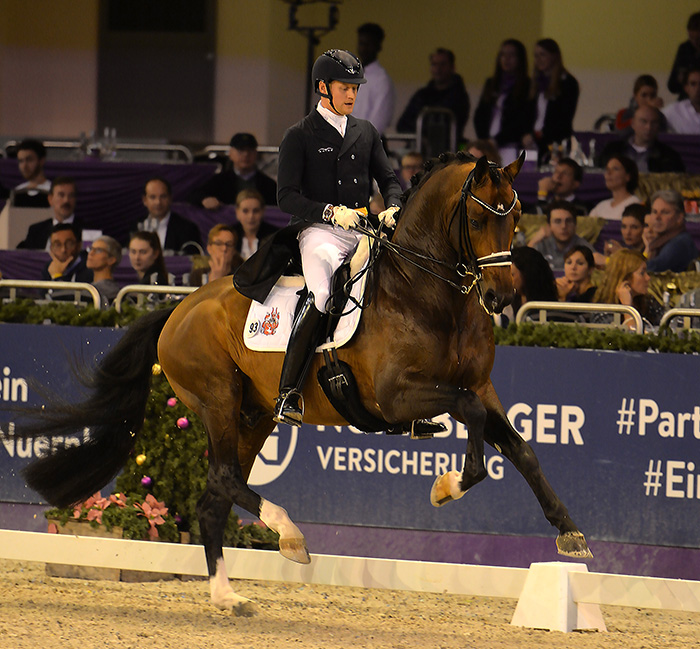
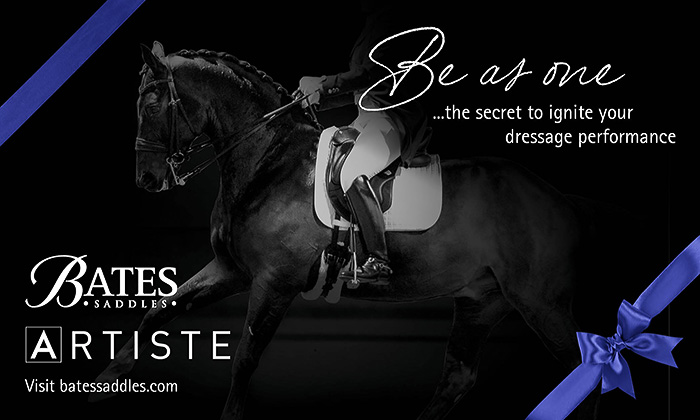
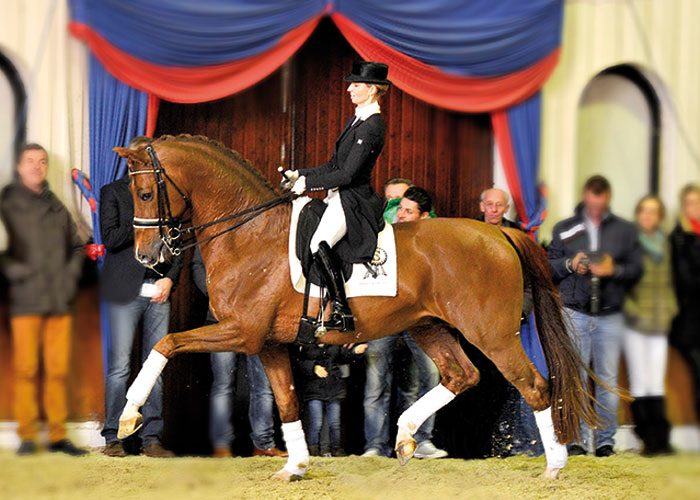
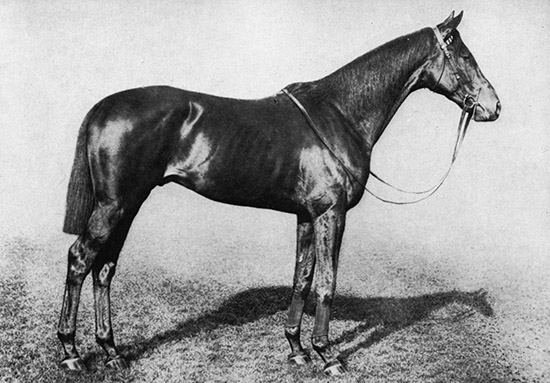
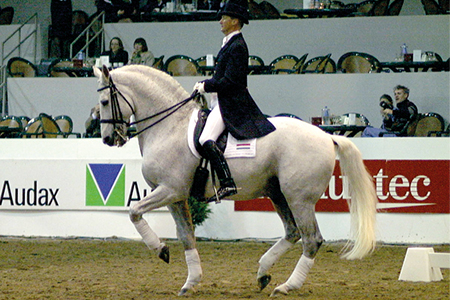
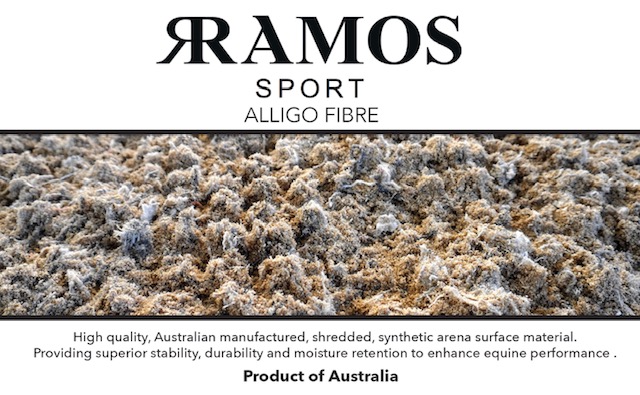
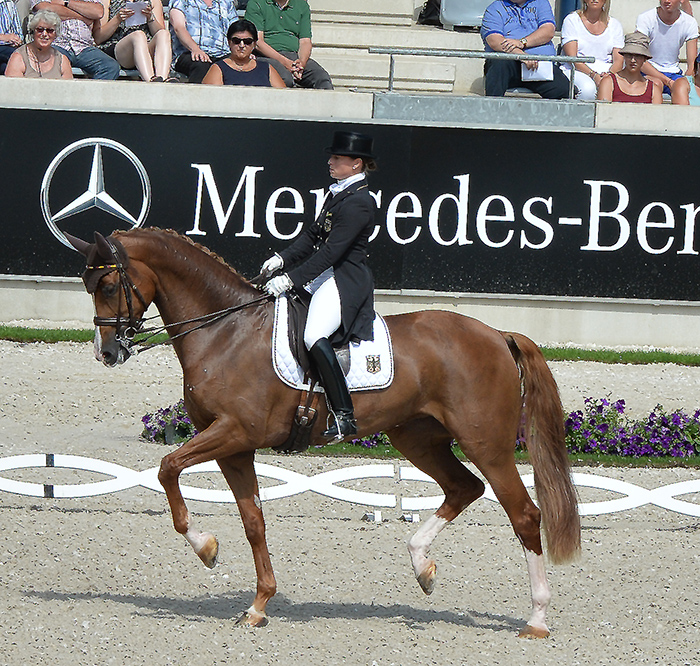
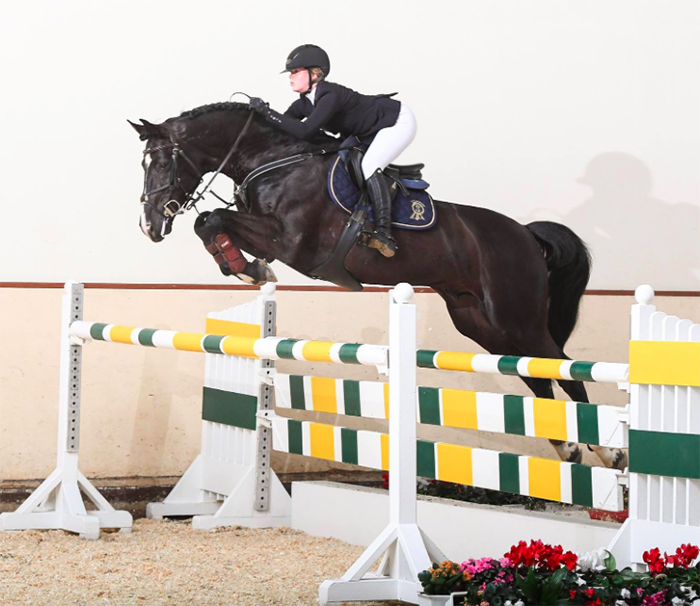
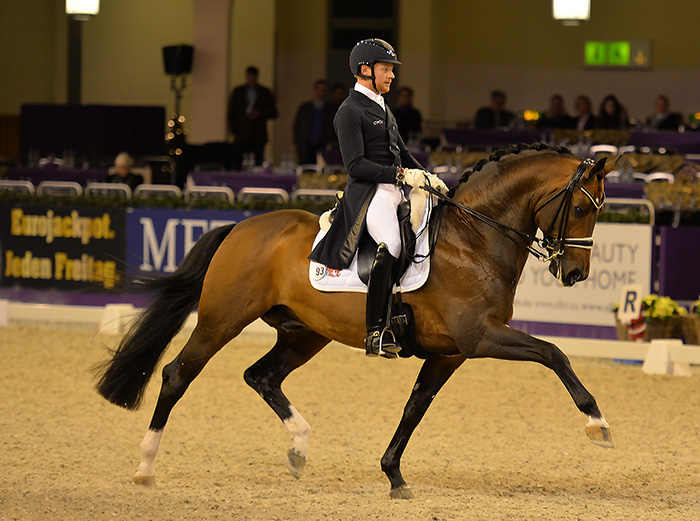
Quality thoroughbreds have had a big influence in the development of the modern warmblood. Teddy appears twice in the pedigree of thoroughbred stallion Angelo. Angelo’s descendants have dominated dressage in the last 40 years, they include; Ahlerich, Rembrandt, Amon and Rubenstein.. Interestingly, Teddy’s sons were a sensation in US racing and champion stallion Mr Prospector has two crosses.
Breeding is not black magic. You can attribute the achievements of the current warm-blooded sport horses to on the forehand -built racing model of the English Thoroughbreds because they are in their pedigree. These performances are due precisely to the balanced model of the warmbloods. When they have more of the balanced model, performance increases. And that is after four or generations, when the whole blood content decreases, this is also clearly visible. By the way, none of the Thoroughbreds mentioned in this article has a whole series of offspring with sports performances.
Actually Karel de Lange is demonstrably incorrect in his assertion that over the generations the percentage of ‘blood’ decreases. Florian Sitzenstock of the University of Goettingen found in a ground breaking piece of research that in the Hanoverian studbook since 1985, the percentage of horses by full-blood or half-blood sires has diminished, yet the percentage of Thoroughbred blood in the Hanoverian population had actually increased. For further facts and figures on this topic go to https://www.horsemagazine.com/thm/2019/07/thoroughbred-blood-is-it-still-needed-in-2019/ and for further information https://www.horsemagazine.com/thm/2010/11/do-we-still-need-thoroughbred-blood-to-breed-performance-horses/ – Christopher Hector